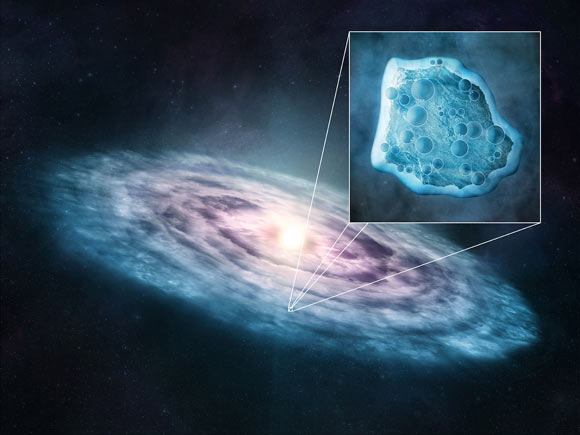Carbon monoxide is ultra-bright and extremely common in protoplanetary disks, making it a prime target for astronomers. But a huge chunk of carbon monoxide is missing in all observations of such disks, if the current predictions of its abundance are correct. According to new research led by the Harvard & Smithsonian’s Center for Astrophysics, carbon monoxide has been hiding in ice formations within the protoplanetary disks.
An artist’s illustration of a protoplanetary disk; the insert displays carbon monoxide molecules in the ice phase. Image credit: M. Weiss / Harvard & Smithsonian’s Center for Astrophysics.
“This may be one of the biggest unsolved problems in planet-forming disks,” said Dr. Diana Powell, an astronomer at the Harvard & Smithsonian’s Center for Astrophysics.
“Carbon monoxide is essentially used to trace everything we know about disks — like mass, composition and temperature.”
“Depending on the planetary system observed, carbon monoxide is three to 100 times less than it should be; it’s off by a really huge amount.”
“This could mean many of our results for disks have been biased and uncertain because we don’t understand the compound well enough.”
In the new study, Dr. Powell and her colleagues made alterations to an astrophysical model that’s currently used to study clouds on exoplanets.
“What’s really special about this model is that it has detailed physics for how ice forms on particles,” he explained.
“So how ice nucleates onto small particles and then how it condenses.”
“The model carefully tracks where ice is, on what particle it’s located on, how big the particles are, how small they are and then how they move around.”
The authors applied the adapted model to planetary disks, hoping to generate an in-d

